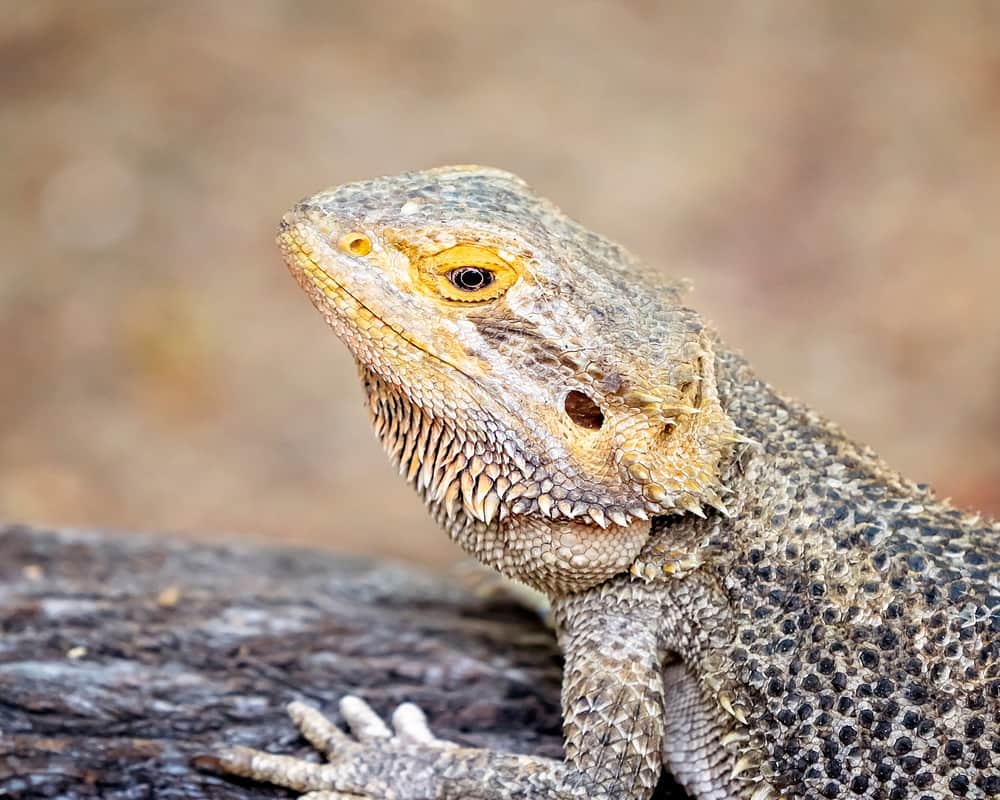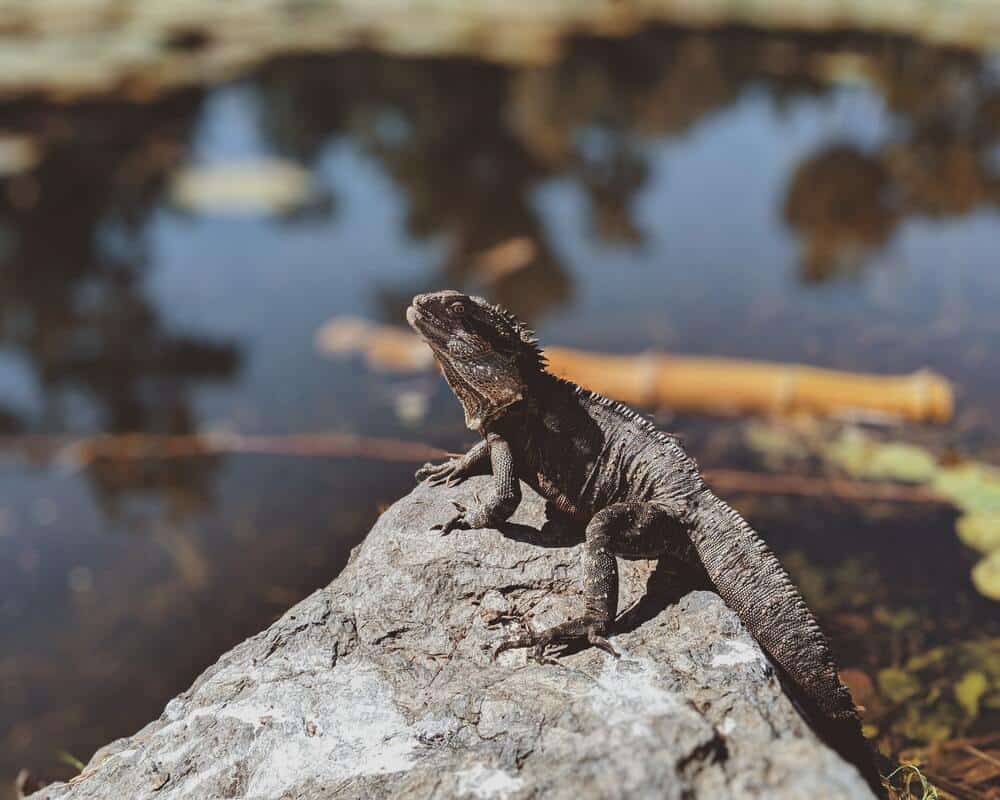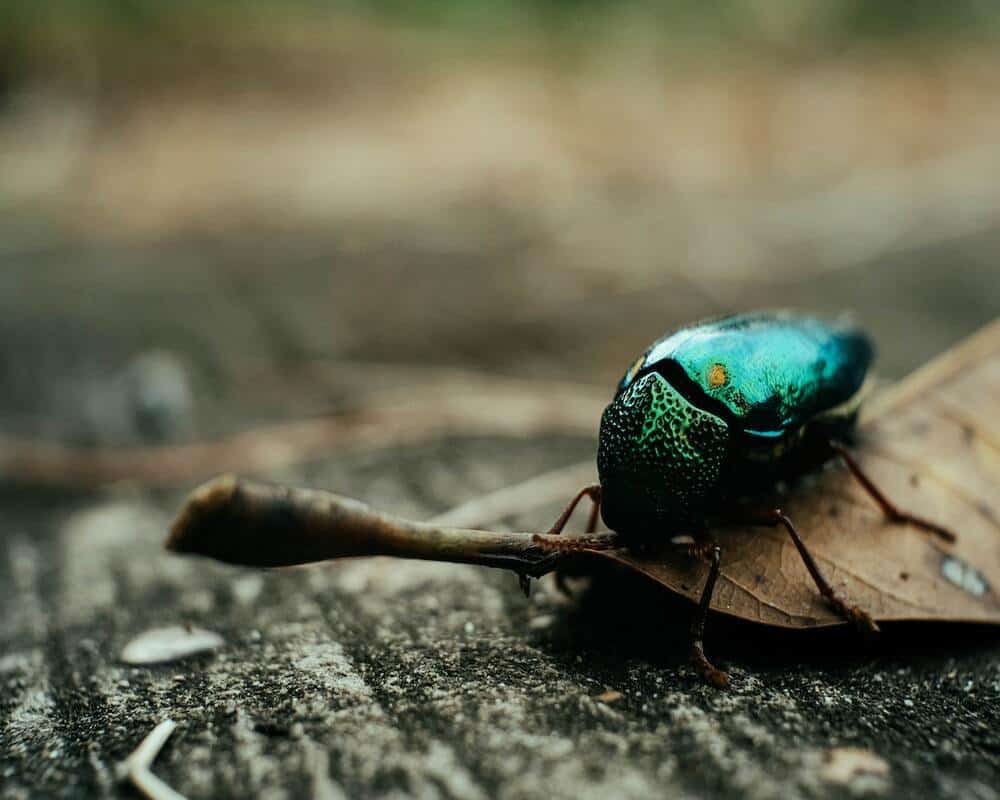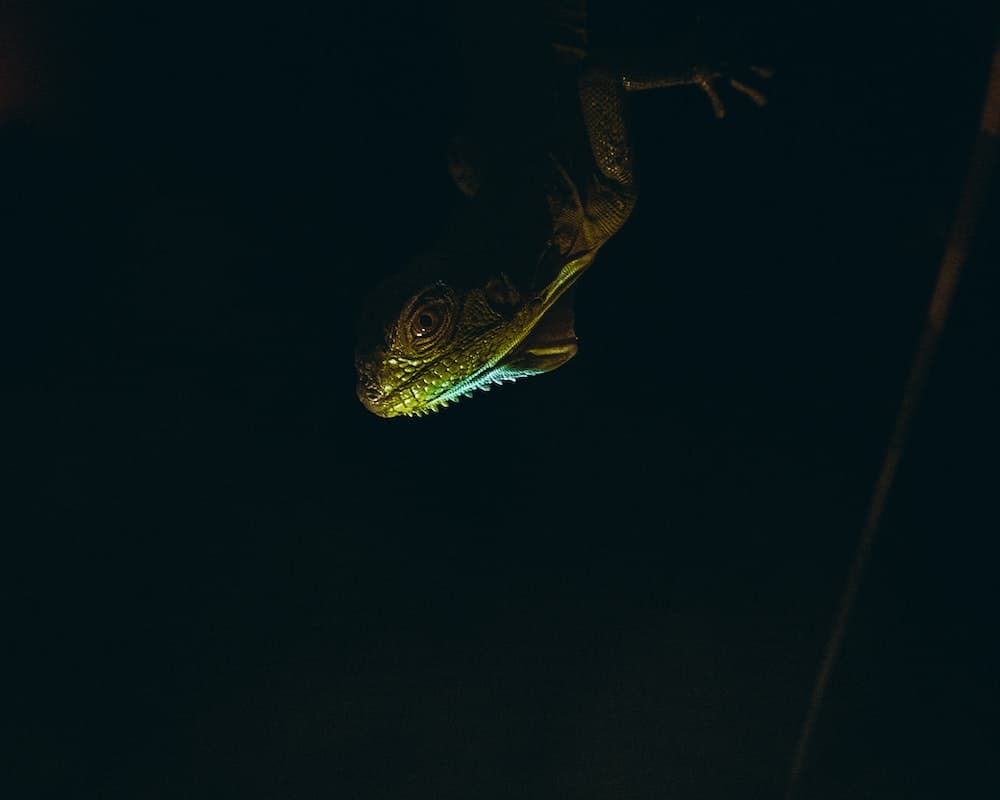When you spot something strange on your pet, you tend to get worried. You do not want that to be anything harmful. Similarly, many pet owners of bearded dragons get worried when they notice black spots on their bearded dragons bodies.
Well, usually, black spots on your bearded dragon’s body mean no harm. They can just be freckles, dirt, or black spots, they are just part of their color pattern. That being said, black spots at times can also mean that there is a growth of fungus on your bearded dragon or marks caused by stress.
There are different reasons why there are black spots on your bearded dragon. We have provided a detailed explanation of all the reasons.
What Do Black Spots On A Bearded Dragons Mean?
There are different reasons for the black spots to appear on your bearded dragon. Some are normal and mean no harm, whereas a few reasons for the black spots appearing on your pet mean that you need to step in and take certain measures.
- Dirt
Bearded dragons can get dirty very easily. Once you let them out of their cage to roam around in the yard or around your house, there are chances that the dirt around has stuck on your bearded dragon’s body.
Even if you haven’t let them out of their cage, the black spots can be their excreta or loose substrate in their cage stuck to their body.
What You Can Do:
The best way to remove the black spots of dirt is by giving your bearded dragon a bath.
- You can fill the tub with water and place your bearded dragon in it. Let your dragon swim around.
- You must ensure that the water is not higher than their knees, and the most important point to remember is that the water must be warm.
- Bearded dragons rely on external heat to keep their body temperature in check. If the water in the tub is not warm enough, your pet will feel cold and can fall sick.
- Bathe your bearded dragon at least two or three times a week. Once you bathe them, dry your bearded dragon with a dry cloth.
Bathing will not only remove the dirt and keep your bearded dragon clean, but it will also keep them hydrated.
Check out the best way to give your bearded dragon a bath here.
- Natural Color
The black spots that you see on your bearded dragon can be a part of their color pattern and are nothing harmful.
Usually, in the wild bearded dragons are known to be in gray and brown tones. Bearded dragons that are captive and bred come in various colors and patterns. They are available in colors such as olive, orange, red, yellow, purple, or white as the base color.
They also have marks in contrasting colors. To date, new patterns and colors of bearded dragons are regularly bred, and at present, there are more than 20 different morphs and colors available.
The black spots on your bearded dragon can simply mean that they are a part of their natural color pattern.
What You Can Do:
You can always contact the place you bought your bearded dragon from, and they will be able to provide you insights on your dragon’s specific color morph. They will also tell you what you can expect your bearded dragon to look like when they grow older. Doing this will clear up your confusion regarding the black spots.
Now, if you think that the black spots are not part of your bearded dragon’s natural color pattern, it is best to monitor the black spots and ensure that they do not spread.
- Freckles
Just like humans, at times, freckles appear on animals, too, and there is nothing to stress about. These black spots mean no harm to your pet.
Freckles can appear at any time on your bearded dragon, but most of the time, it is during their shedding process. These freckles form on your bearded dragon during shedding when an area on the scale of your dragon was removed too early. When it falls off too early, it will not form or develop properly, leaving a black spot.
What You Can Do:
Freckles are normal, but you can monitor the spot and ensure that it doesn’t change in color, or size or spread to other parts of your bearded dragon’s body. If it does, consult your vet.
- Abrasions
Just like any other pet, even bearded dragons are prone to cuts, scrapes, and wounds. The black spot that you see can be an abrasion.
You must know that bearded dragons are active and curious species even in their enclosure, which is why it is not abnormal for them to get a cut on their body.
What You Can Do:
Hurts or scrapes mean no harm as long as their cuts or wounds are kept clean, and the enclosure of your bearded dragon is clean.
Now, you must also keep in mind that abrasions can increase the chances of infection. Keep an eye on your bearded dragon, and if you notice the area oozing liquid or turning red, it means that there is a sign of infection.
If the infected area is turning black and spreading, it means it is an indication of necrosis. Necrosis means that the healthy tissues around the abrasion are dying.
You can visit your vet to stop the infection from spreading.
- Stress
If you notice black spots on your bearded dragon’s stomach, limbs, or on their beard, it means that they are signs of stress. These spots can be in the form of black lines or oval dots.
Bearded dragons can get stressed easily, and there are different reasons as well.
The reasons include the following:
- No adequate hiding space
- New home or place
- The temperature in their enclosure is not correct.
- The enclosure is too small for your bearded dragon.
- The humidity levels in the enclosure are incorrect.
- Their enclosure is placed in a busy or noisy area.
It is not healthy for your bearded dragon to be stressed. When they are stressed, it affects and paves the way to respiratory infections and metabolic bone disease.
What You Can Do:
To reduce their stress levels and make the black spots disappear, there are a few things that you can do.
- Bearded dragons need to live at a certain temperature. Ensure that their enclosure has a warm and cool side. The temperature in their enclosure should range from 80° degrees Fahrenheit (Cool) and 100° degrees Fahrenheit (Warm).
- Ensure that your pet receives enough UV lighting for at least 12 hours a day.
- If you have recently bought your bearded dragon home or moved them to an enclosure, give them time to adjust to their new surroundings. Eventually, when they get used to their new environment, the black spots will disappear.
If you feel that the black spots are still there even after you provide your bearded dragon with an enclosure with the right temperature, hiding spaces, and noisy free environment, it is always better to take your pet to the vet.
- Burn Marks
Burn marks can turn into black spots. Your bearded dragon might have gotten burned because of the heat lamp being too close to your dragon’s basking spot.
Remember that burn marks can lead to infection as well.
What You Can Do:
You can start by moving the heat lamp or the UV light a little away from the enclosure to a safer distance. This will stop the burning.
You can heal the burn marks with:
- Raw honey
- Aloe Vera
You can apply a thin layer on the burn marks. It is also best to seek medical help. Your vet might prescribe you creams to ease the pain and stop the infection.
- Fungal Infection
The black spots on your bearded dragon can mean that it is a fungal infection. If the enclosure of your bearded dragon does not have an adequate temperature, it can contribute to the growth of fungus.
Check out this video showing a bearded dragon having a fungal infection.
What You Can Do:
The enclosure of your bearded dragon must have a proper temperature with a cool and warm basking side.
Usually, you can not tell if it is a fungal infection unless you consult your vet. If you notice the black spot growing, consult your vet immediately. Your vet will run a few tests and prescribe medication to reduce the fungus. In case the infection does not reduce, your vet might amputee the infected area.
In between your vet visits, you can give your bearded dragon a Betadine bath daily to reduce the fungal growth.
- Parasite Infection
If you notice tiny black spots (they look like little bumps) on your bearded dragon that is moving, it can mean that your bearded dragon is infected with a parasite infection.
What You Can Do:
When parasites enter the enclosure, they quickly move on to your bearded dragon’s body, causing skin infections. These parasites enter the cage when it is not maintained well. You must clean the enclosure regularly.
Now, when your bearded dragon is affected by a parasitic infection, you must remove them from its enclosure. Clean, rinse and disinfect the enclosure. Quarantine your infected bearded dragon as well.
Remember to take your infected bearded dragon to your vet, as medical care is needed.
- Scale Rot
Scale rot is a common issue in bearded dragons. It is a bacterial infection caused due to high humidity levels.
Black spots are the first signs of scale rots. It must be treated immediately before it becomes harmful.
Your bearded dragon’s scales will begin to ooze fluids and then fall off. If not treated quickly, the infection can reach your bearded dragon’s bloodstream and cause septicemia.
What You Can Do:
Visit your vet immediately to stop the infection, and your vet will provide you with antibiotics for your bearded dragon.
You can place a hygrometer to measure the humidity levels in your bearded dragon’s enclosure. This will help prevent scale rot and respiratory tract infection. The humidity levels must be between 20 to 40%.
Conclusion
These are the reasons why there are black spots on your bearded dragon. As mentioned before, some are harmful while some are not, such as freckles. If you notice black spots, give your bearded dragon a bath before taking them to the vet. If the black spots are not freckles or dirt and are growing or spreading, take them to your vet immediately.




